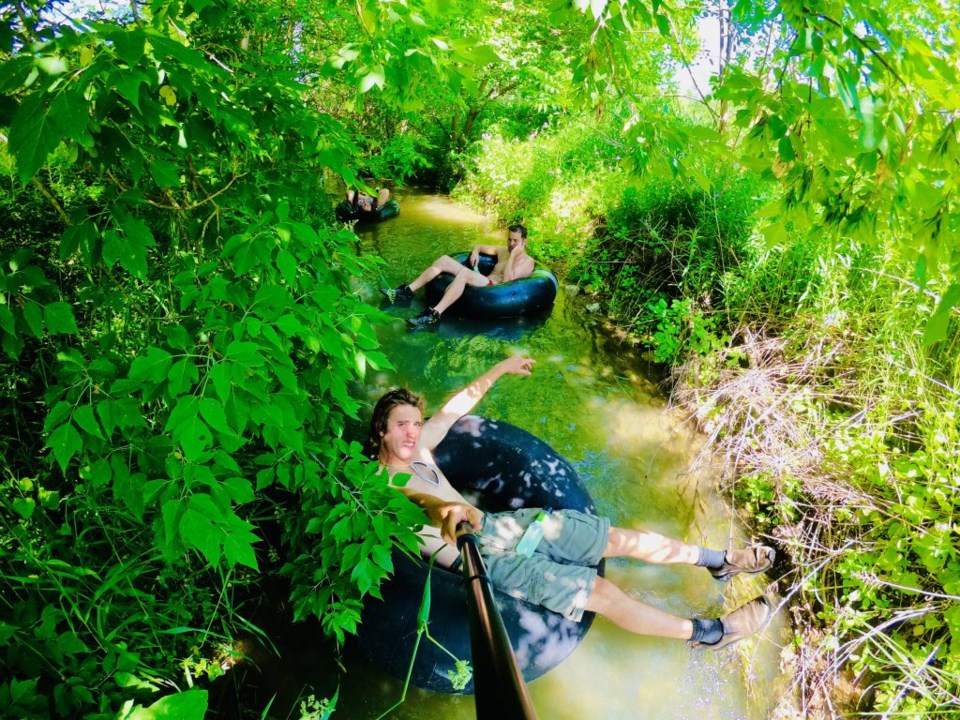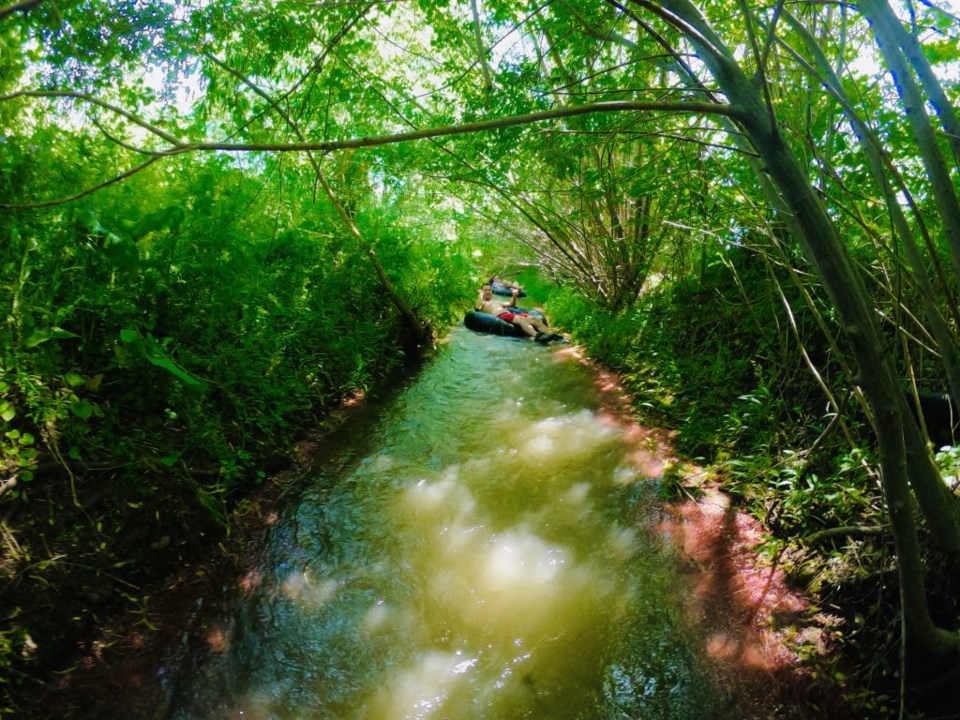
On our private property on the outskirts of Virgil, a tributary of Four Mile Creek transitions from a glorified ditch and back into its original state.
When the creek crosses our property line, it is no longer linear. A meandering world of serpentine bends is guiding me through the wooded area, and there’s no walking required.
I’m sitting on a giant black tire tube, courtesy of Enns Battery and Tire up the road. Two years in a row now, and usually during our first heat wave of the season, Enns gets a very excited phone call from me looking for tire tubes so I can float the daylights out of this creek.
It’s not only an impossible amount of fun, but also a trip down an aqua avenue to observe local wildlife from angles and habitats rarely visited.
We started tubing as early as the middle of May this year. That’s when our first unseasonally hot and dry spell settled over southern Ontario. When these conditions prevail, the creek naturally begins to desiccate.
This is precisely the time where more water is pumped into these creeks to rejuvenate their levels, allowing farmers to suck water out so they can properly irrigate the orchards and vineyards. The water typically comes from the Niagara River or the Sir Adam Beck Hydroelectric Station Reservoir.
That means that even on a toasty Niagara day, the water is surprisingly high. I plunk my bottom into the tire tube, I kick back, and what happens next is my new favourite downtime activity.
Your weightless body passes under the shady boughs of a pine tree stand. Exiting the cool alcove, you float under the first bridge of the property, which then gives way to a sunny, grassy corner of the creek. You round the first tight corner of many, admiring the steep banks and tree roots tumbling down to the water’s edge. The trickle behind you disappears, and you find yourself on a deep and ultra-relaxing straightaway before the next bend.
On this property, the creek runs its natural course with curves and turns. This allows a series of invaluable microhabitats to form. Where the creek makes a sharp kink in the land, it typically changes the shape of the embankment, resulting in deeper pockets of water in between sections of shallow ripples. Logs and rocks tumble into the water and settle for a new life, where they create water dynamics which shape the stream bed into little divots and pools. In general, stream debris is an essential habitat within the habitat, creating ideal conditions for fish to lay their eggs in specific pockets of water.
After casually floating through the lazy-river stretch, you excitedly shout back to your tubing team to prepare for “the gauntlet,” a fast section of creek that pushes you through a tunnel of vegetation at high speed. Of course, we’re not talking about Niagara River rapids, but this is the relative excitement you get for a NOTL creek.

(Owen Bjorgan)
The creek is primarily lined with willows, their roots creating a blood red fringe along the banks while their branches close you in from above. It just adds to the aesthetics of the situation, as you end up spinning in circles and cruising through a tube while on a tube.
While you’re laughing and cruising to the next S-bend, frogs and toads hop in from the edge with a classic kerplunk salute. A muskrat swims ahead of you as if to say, hey, I do this every day. Recently, my girlfriend and I followed a mother mallard duck and her seven ducklings for the whole 20-minute duration of tubing. Last year, my brother and I tubed by a gargantuan snapping turtle, who appeared to be a rock with legs at a first glance. I picked the creature up to appreciate her reptilian stateliness, and proceeded to watch her swim upstream with no effort. A green heron flies above, his view healthy and wholesome, as the creek winds around creating scores of habitat and hunting opportunities.
Essentially, this creek is a habitat corridor for NOTL’s native species to move throughout its watershed. This is also evidenced by the deer tracks leading up and down the banks, and our occasional sightings of coyotes on the property.
After the gauntlet, I’m floating under a natural log bridge which we call shot bridge, where we sometimes tee up drinks for our thirsty friends as a halfway point surprise. After that, I’m floating through a sunny and slow area called the Florida swamp, filled with yellow water lilies and soft, grassy edges. Many twists, turns, and moments of relaxation later, I’m crawling up the bank at the other end of the property, which is where the adventure ends.
Several years ago, my friend Will Friesen and I took advantage of a flood situation, which took us past East and West Line and down past Wagg Road.
Since then, I’ve been joined by my mom, my brother, my best buddies, my girlfriend and my dog for tubular times. Every time I taste the fresh air and gratitude of this experience, it’s a gentle reminder that we can get creative with our outdoor fun right here in Niagara.
Additionally, it is a reminder that an area of our human enjoyment is also an area of immense natural importance.